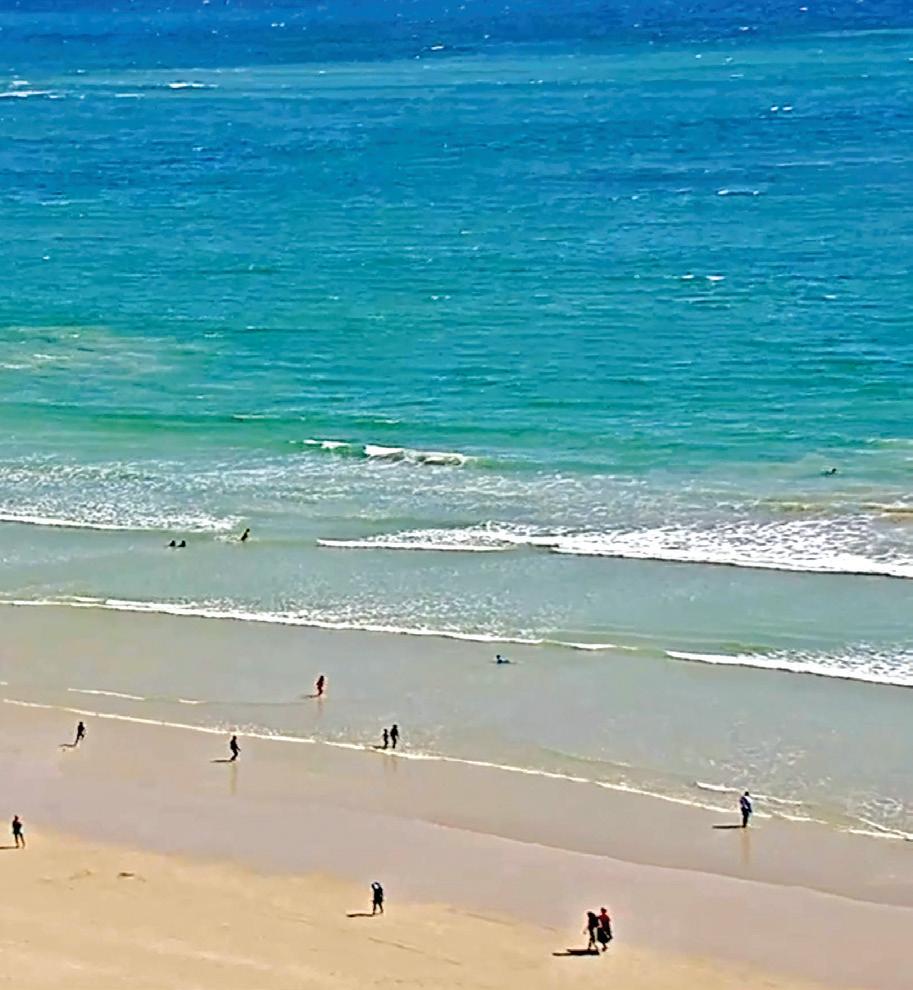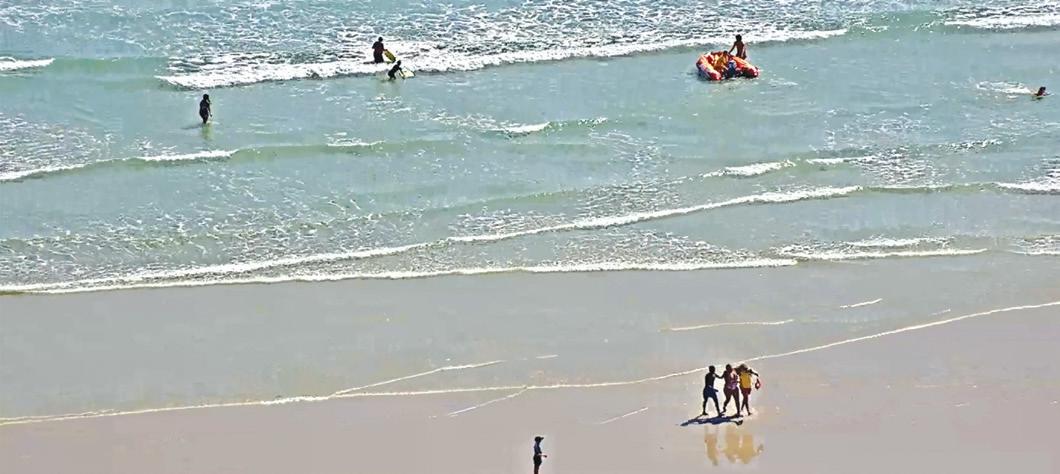
3 minute read
EYE IN THE SKY
EYE IN THE SKY
CCTV cameras are a new Sea Rescue initiative that uses powerful pan-tilt-zoom technology to monitor beach safety, help lifeguards to prevent drowning tragedies and assist rescue services during operations. Andrew Ingram tells us about the first camera that was used at Strand Beach in Cape Town.
AS I WALKED INTO the Sea Rescue Emergency Operations Centre (EOC), I saw that Marc De La Porte, the on-duty operator, was bent over the Strand camera monitor.
‘Everything okay?’ I asked him.
He did not turn around. I could see he was panning the camera to the left of the area covered by the lifeguard flags.
‘We have a drowning in progress in front of St Tropez,’ he said.
‘Lifeguards are responding, and I have called out Station 9,’ he added, referring to our Gordon’s Bay Sea Rescue crew.
The EOC emergency line started ringing, and Marc got up to answer it.
I slipped into Marc’s empty chair and took control of the camera. Panning past the flags zone to St Tropez, I could see the Strand lifeguards launching their inshore rescue boat (IRB).
It was 15h51 on Thursday 10 December 2020.
FAR OUT
When the camera was on the St Tropez zone, I zoomed in to look for a rip current, which is the biggest danger in this area. There was nothing. The lifeguards’ IRB appeared in the frame, and I saw it stop and pull a person out of the water. By then it was 15h52.
The young woman rescued by the lifeguards was 17 years old. She was about 200m from the beach, and I wondered how on earth anyone had managed to get so far out. And were there any other casualties? She was swiftly brought to the beach and I watched the IRB being turned around and launching through the surf again. Obviously there was at least one other casualty.
As the lifeguards started to run their search patterns, I took the camera back in time. It is programmed automatically to look at eight different zones for 30 seconds at a time, recording all the while. This allows the camera operator to rewind and look at the recording of any one of the zones if necessary.

Suddenly I saw the rip.
Slowly now, going back, I saw that at 15h35 a strong feeder rip had been forming. It had been flowing close to the beach and turned out to sea exactly where three youngsters were playing in the surf.
By 15h37 it had become a fully fledged flash rip. From a calm section of beach to a wild rip current in under five minutes – the three children never stood a chance. They had been lifted off their feet and pulled away from the beach. I ran the camera’s recording forward and watched the flash rip dissipating. The sea was back to the calm safe area that it had been 15 minutes before the rip had formed. I now understood what had happened – and how the children ended up so far from the beach.
LAST KNOWN POSITION
In the meantime Marc had come back across to the camera monitor. He had a total of seven rescues on the go around the country, all at the same time. It was chaos. This is what NSRI EOC operators are trained for. Working quickly, Marc got Google Earth up on another monitor and as I pointed out the position of the child who was furthest out to sea, he plotted the position. Sliding back to his monitor, Marc communicated the ‘last known position’ to the rescue crews on the scene.
The City of Cape Town Strand Beach lifeguards, led that day by Rebecca Carter-Smith, rescued one child and resuscitated another. The third child’s body was found days later. It was an excellent effort by all the first responders and, thanks to this beach safety camera, we were able to understand how this happened and plot the ‘last known position’ exactly. And, hopefully, now that we understood how and where flash rips form on this beach, we can prevent a tragedy like this from ever happening again. › The Beach Safety Camera project will be expanded to Blouberg Beach in the coming months, followed soon, sponsorship allowing, by all dangerous beaches around the country.











